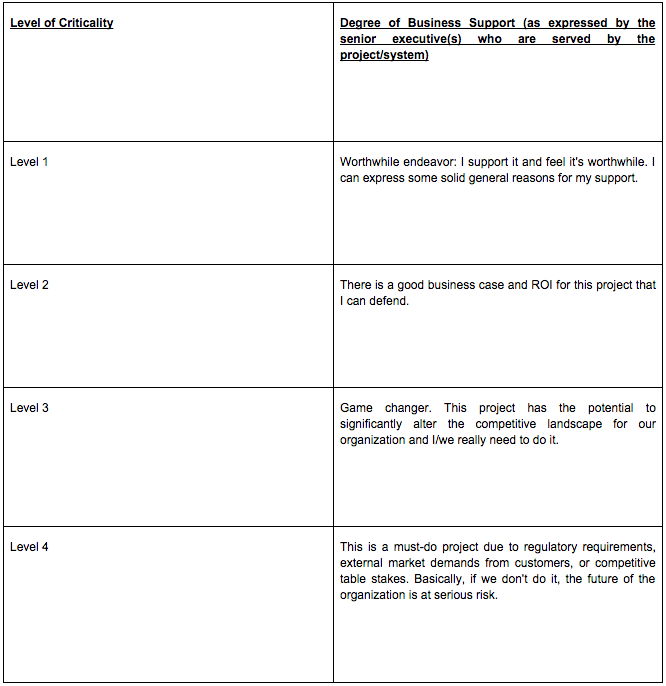Goal Setting for Your Job: Use This Tool to Prioritize Surprise Requests
 You’re making excellent progress on the priorities you and your business stakeholder established a few months ago.
You’re making excellent progress on the priorities you and your business stakeholder established a few months ago.
You’re not done yet, but you feel confident you will complete the assignment on time.
That is, until your business stakeholder arrives unexpectedly and shares a new set of assignments he wants you to handle personally.
What do you do?
Is it Your Job to Do Everything Asked of You?
Of course not. You only have so much time, so much mental energy, and so much personnel to direct towards your assignments. Even if you wanted to tackle every assignment your stakeholders asked of you, doing so would be impossible.
This logistical reality won’t prevent your business stakeholders from asking you to take on more assignments than you can handle. It’s up to you to say “No” to some of the requests you receive.
After all…
It’s your job to complete your highest priority assignments, not everything your business stakeholders ask for.
Determining priority is easy when:
- You know how to define real-world outcomes.
- You are close enough to the business to understand which outcomes will really move the needle.
Armed with this knowledge, and one helpful tool, you can determine the priority of each work request you receive—including surprise requests—and say “No” to low-priority items without alienating yourself from your business stakeholders.
Your Tool for Prioritizing Surprise Requests:
The Business Criticality Index
We originally designed The Business Criticality Index for senior IT leaders who needed to recruit business support for large-scale implementations. But over time, we saw IT pros at every level of their organization use the Business Criticality Index to create consensus with their stakeholders regarding what work needed to get done, in what order.
Here’s the Index:
Here’s how you can use it to prioritize the next surprise request dropped on your desk.
- Your business stakeholder comes to you with a surprise request.
- You take out the Business Criticality Index and ask your stakeholder to give this surprise request a “Level of Criticality”, on the scale of from 1-4.
- You then take out your current list of priorities and compare the surprise request’s Level of Criticality to each of your current assignments’ Level of Criticality.
- If the surprise request has a higher Level of Criticality than one or more of your current assignments, then prioritize this surprise request over them. If it doesn’t, then maintain your existing priorities.
No need to complicate the point. Once your business stakeholders actively help you prioritize requests, you will experience a much easier time maintaining the critical path.
And what if you are taken off-course with an assignment that appeared high-priority, but ultimately didn’t deliver? The blame won’t fall fully on your shoulders.
Focusing on what really matters is easy with the right tool, and your stakeholder’s support.



